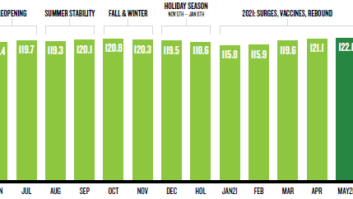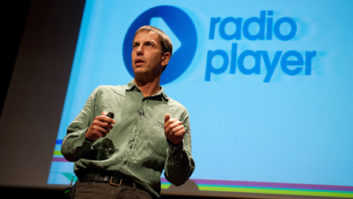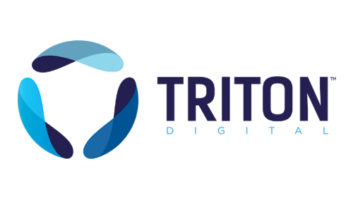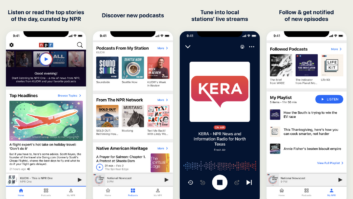
I was amused by a recent thread on an engineering listserv. While discussing the idea that the music service Pandora was a potential competitor to music-programmed radio, a few of the participants admitted (perhaps with a bit of sheepishness) that they preferred listening to Pandora over their own stations. No names will be mentioned here …
CRYSTAL BALL
This anecdote is a simple reminder that Internet audio streaming as a replacement for broadcast radio has been in the minds of many of us for some time now.
I remember encountering this idea just over 10 years ago when audio streaming was in its early experimental stage. I was not impressed with the sound. But the most passionate of the “webnoscenti” practically pounded their shoes on the table and screamed “We will bury you!” to those of us who worked in broadcasting.
Their predictions, as it turned out, were almost true, but with an unintentional outcome. Those who delved too deeply in audio streaming ended up burying themselves in debt and went out of business in the recession of 2000 rather than officiating at radio’s funeral.
Still there clearly was potential.
A lot of time has passed and there can be no question now of the importance of audio streaming. The quality and reliability have increased enormously. More importantly, we are on the threshold of a wave of new mobile Internet services. Popular entertainments that were formerly tethered to desktop computers will soon reach into a wide range of new portable devices.
Apple, which garnered so much success in the music domain with its family of portable iPods, has now transformed the simple cell phone into the powerful iPhone. Ford is beginning to offer mobile Internet service in the dashboard of their cars with the Sync system. These two technological changes are removing the final technical barriers that have protected radio for so many years.
The best protection that radio has is to make sure that we continue to invest in our own streaming services so that we can be a part of these new markets as they open up. Good programming delivered to listeners, no matter the means, is the best way to retain relevance.
THE TIDAL WAVE OF DEMAND
Recently I came across an interesting report that speaks about the technical challenges of the mobile internet revolution. Called the “Great Radio Spectrum Famine,” it was written by Mitchell Lazarus, a partner in the law firm Fletcher, Heald and Hildreth, which specializes in telecommunications and broadcasting. The report was published in the IEEE Spectrum and can be read at tinyurl.com/2fmyuya.
It is a thoughtful and well-written consideration of the large and growing demand for radio spectrum. Lazarus discusses the recent decision by the FCC to try to free up another 500 MHz of spectrum for mobile data services. If you aren’t aware of this decision, you should be: As far as policy makers are concerned, the demand for wireless is growing fast and we need to move aside existing services, in particular over-the-air TV, to help it expand. While right now it appears the FCC primarily will be looking at UHF frequency bands for wireless data expansion, the need for spectrum efficiency in all services is a high priority.
This demand growth is dramatically shown in a graphic provided by Cisco that estimates mobile broadband data usage. In 2009 worldwide mobile data usage was approximately 100,000 terabytes per month. By 2014 Cisco estimates demand will grow to 3.6 million terabytes per month. At these growth rates, in 10 years demand for mobile broadband will increase by a factor of 100. That is a growth of 10,000 percent. In the face of this demand it is clear that every kilohertz is going to count in the future.
Lazarus gives a few examples to illustrate how past communications services have become more efficient, either by government mandate (such as the forced HDTV conversion) or by the marketplace (the transition from analog to digital cell phones that took place in the 1990s). Lazarus favors policies that provide a marketplace incentive to move to more efficient systems rather than transforming services by regulation.
To provide my own example, HD Radio as a digital service is clearly more efficient than the existing FM analog, as it is able to fit several channels of audio services into essentially the same bandwidth. A possible marketplace incentive to accelerate the complete conversion to digital radio services might be to license FM analog channels at a higher price than digital ones. The trade is that we get more channels to help pay for the costs of conversion, without having to use additional spectrum.
I’m not agreeing or disagreeing with this concept here but trying to point out how the situation might be viewed by the government regulators who oversee our industry.
IS THERE A LIMIT?
In spite of the benefits of a movement toward efficient spectrum usage, there is a flaw in the entire argument.
Lazarus points out the tendency of entertainment providers to increase the amount of data required for their websites as the available bandwidth expands. This creates a self-defeating cycle in which new bandwidth is then consumed in ever-more-complicated streaming. Consider how in the early days of the Internet we looked at text, then at photos, progressing to audio and finally to streaming video.
This situation reminds me of the relationship between automobiles and highways. We have come to accept that no amount of highway construction can improve traffic flow as the number of cars simply adjusts higher when new roads are built. Is this also true of the Internet?
Looked at another way, even if we could improve the efficiency of spectrum usage by 25 percent over the next 10 years, this would simply be a drop in the bucket when compared with growth rates of 10,000 percent in spectrum usage for mobile entertainment.
Something will have to give eventually.
This is where broadcasting can continue to shine. The number of users can expand indefinitely without the need for additional spectrum. And recent auctions and filing windows show that demand for radio stations remains extremely strong.
Streaming is important but we still need to maintain awareness of the benefits of the broadcast model.
The author is technical editor of Radio World Engineering Extra.












